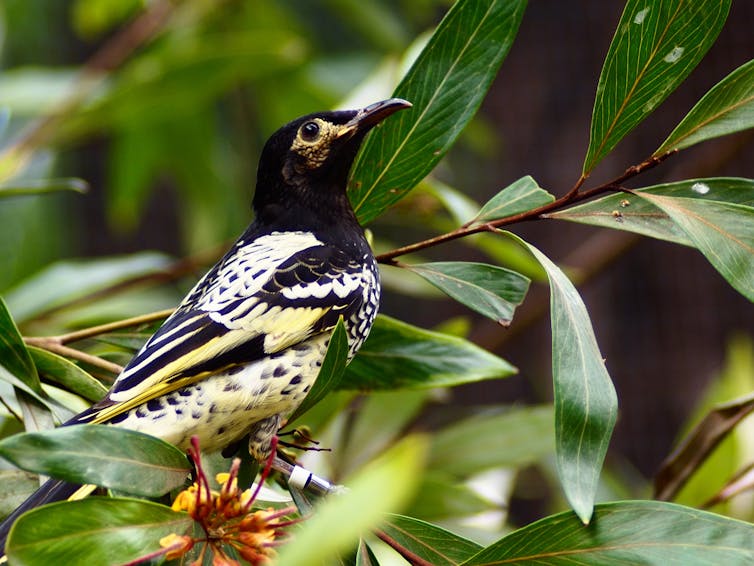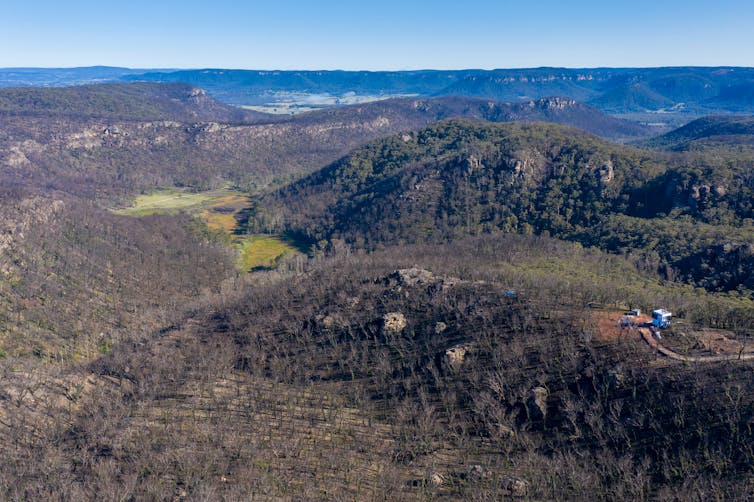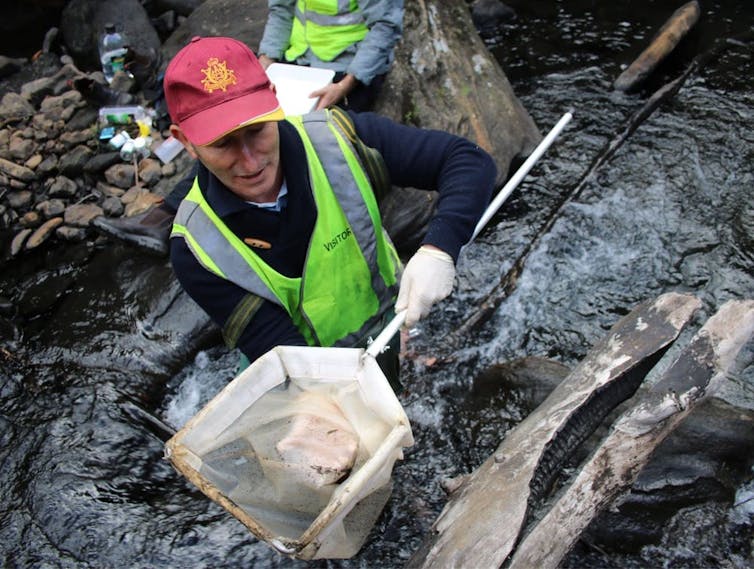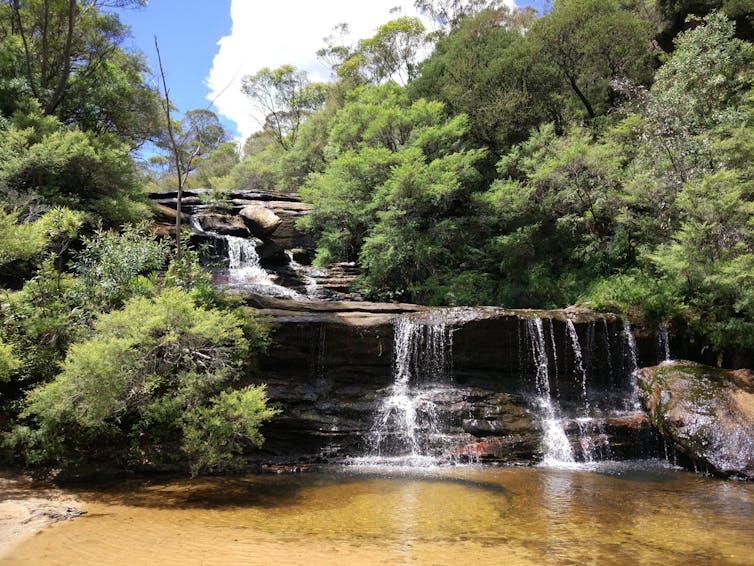The Blue Mountains World Heritage site has been downgraded, but it's not too late to save it
- Written by Ian Wright, Senior Lecturer in Environmental Science, Western Sydney University
Twenty years ago, UNESCO inscribed the greater Blue Mountains area on the World Heritage List for having “outstanding universal value”.
If you’ve travelled to the Blue Mountains, with its rugged sandstone cliff faces, hidden waterfalls and rich diversity of life, this value is undeniable. The Dharug and Gundungurra traditional owners long understood this value as they lived within and cared for Country (Ngurra) and, in turn, were nourished by it.
But after fires ripped through 71% of the greater Blue Mountains area, the condition of the World Heritage site has officially been downgraded.
Last week, the International Union for Conservation of Nature (IUCN) — the official advisor to UNESCO — rated the site as being of “significant concern”, a drop from “good with some concerns”. It’s now in the second-lowest category.
The news may be grim, but there are signs of hope. Despite threats of climate change, bushfires and decades of pollution, efforts are being made to minimise lingering impacts, and results are encouraging.
Ancient trees and unique animals
The Greater Blue Mountains World Heritage Area covers just over one million hectares, divided into eight protected areas.
 Clearing of the regent honeyeater’s woodland habitat has led to numbers declining and their range contracting.
Shutterstock
Clearing of the regent honeyeater’s woodland habitat has led to numbers declining and their range contracting.
Shutterstock
The largest protected area is Wollemi National Park (499,879 ha) in the north. This park is, famously, home to the last wild population of Wollemi Pine. These trees have a deeply ancient lineage tracing back to when the Earth’s land masses were all part of the supercontinent Gondwana over 100 million years ago.
Read more: Wollemi pines are dinosaur trees
The World Heritage area harbours 1,500 plant species, and 127 of them are rare or threatened. And in an outstanding example of the area’s uniqueness, it also contains more than 90 Eucalypt species — 13% of the global total.
The World Heritage area is also an important habitat for many rare and threatened animal species.
One celebrated seasonal visitor is the critically endangered regent honeyeater. Also under threat, and unique to the Blue Mountains, is the leura skink, which survives only in a handful of sensitive and vulnerable wetland communities.
Current threats
In its new report, the IUCN lists eight current threats undermining the greater Blue Mountains area. The most worrying – those considered “very high threats” in the report — are climate change and bushfires.
The severe fires of last summer inflicted long-lasting damage to many Blue Mountains species that contribute to the unique biodiversity of the area. And climate change is an emerging environmental pressure threatening the delicate ecology of the region through rising temperatures and changes to rainfall.
The IUCN also rated invasive plant and animal species, such as foxes, feral cats, horses, cattle and deer, as a high threat. Mining and quarrying, habitat alteration and several specific aspects of climate change (storms, drought, temperature extremes) were also listed.
The IUCN also named potential threats from planned operations, including future noise pollution from the new international airport in Western Sydney. Another is the impact of periodic flooding from a proposal to raise the wall of Warragamba Dam for flood mitigation purposes.
 The Black Summer bushfires decimated 71% of the Blue Mountains World Heritage area.
Shutterstock
The Black Summer bushfires decimated 71% of the Blue Mountains World Heritage area.
Shutterstock
Cleaning up their act
Climate change and bushfires require massive, coordinated national and international responses, but some major issues in the Blue Mountains can start to be resolved on relatively smaller scales.
For decades, the Blue Mountains have been flogged by a number of human pressures, such as an outdated sewage system from the City of the Blue Mountains and pollution from coal mining. While the environment hasn’t fully recovered, we’re pleased to see successes in the recovery efforts.
For decades, inadequate sewerage systems polluted multiple streams and rivers in the Blue Mountains.
In 1987, the Sydney Water Corporation started a 25-year, $250 million scheme to reduce water pollution from this inadequately treated sewage. And by 2010, a massive upgrade to the region’s sewage system closed 11 antiquated treatment plants.
All Blue Mountains wastewater is now treated to a higher standard at Winmalee in the lower Blue Mountains and is released away from waterways in the World Heritage area.
Another important pressure in the Greater Blue Mountains Area is from coal mining, with UNESCO expressing concerns in 2001 about water pollution from mines, such as the one operated by Clarence Colliery.
 The author, Ian Wright, sampling water in the contaminated Wollangambe River.
Ian Wright, Author provided
The author, Ian Wright, sampling water in the contaminated Wollangambe River.
Ian Wright, Author provided
This mine is in state forest adjacent to the World Heritage area boundary. Research from 2017 found wastewater discharging from the mine was severely contaminating water quality of the Wollangambe River and damaging the ecology for more than 20 kilometres.
Read more: How our research is helping clean up coal-mining pollution in a World Heritage-listed river
Two years earlier, Clarence Colliery, owned by Centennial Coal, was prosecuted after more than 2,000 tonnes of coal material (a slurry of water and coal particles) spilled into the Wollangambe River.
Centennial Coal agreed to comply with a new EPA licence in 2017 requiring the disposal of less polluting wastes.
The latest results from October of this year are very encouraging. They show an enormous reduction (more than 95%) in the zinc concentration in mine waste, compared to 2012 levels.
Embracing ‘planetary health’
For an internationally important site like this, which is home to more than 80,000 residents, all levels of government must adopt the concept of “planetary health”. This recognises that human health entirely depends on the health of natural systems and embraces Indigenous knowledge.
 Wentworth Falls in the Blue Mountains. Embracing planetary health, a more holistic way of thinking about the environment, is the only way we can protect it.
Shutterstock
Wentworth Falls in the Blue Mountains. Embracing planetary health, a more holistic way of thinking about the environment, is the only way we can protect it.
Shutterstock
We’re pleased to see the Blue Mountains City Council is already on board. It recently announced plans to establish a planetary health leadership centre in Katoomba in partnership with universities and other educational institutions.
So while there is much to grieve, we can celebrate small successes in the Blue Mountains’ journey, which show it is indeed possible for a diverse array of parties and the broader community to work cooperatively, and start to better protect it.
Authors: Ian Wright, Senior Lecturer in Environmental Science, Western Sydney University



















